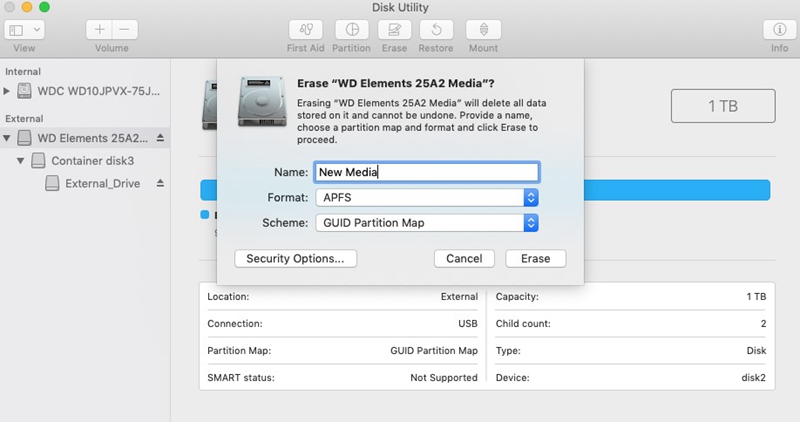

If the correct storage is not specified, perform step 5 again.

Quick note: The output should include an asterisk (*) next to the selected drive.Type the following command to confirm the drive is still selected, and press Enter: list disk.If such a message appears, you may cancel the operation (by pressing ), or you may continue erasing data.Īt this point, link to the steps to either erase the data or wipe the data. If there are any errors, for example due to bad clusters, they will be reported on the Interactive screen. The application will operate on its own without user intervention. There is nothing more to do until the end of the disk erasing process.Please note, however that data that has already been erased will not be recoverable. To stop the process for any reason, press the key.Progress of the erasing procedure will be monitored in the Disk Erasing screen, similar to the one below. After the process has started, you may stop it by pressing the key. This is the final step before removing data from the selected drive for ever.To advance to the final step before erasing data, press.After parameters have been set, move the cursor down to CONFIRM AND ERASE.Type a number and press to accept the number. To change a number in a parameter, select the parameter and press.Similarly, to select the check box if it is clear, select the parameter and press the spacebar. To clear the check box if it is selected, select the parameter and press the spacebar. The square brackets represent a check box.For information on these parameters, see Chapter 6 of this guide. To change another parameter, use the arrow keys to move the cursor to the parameter.Use the keyboard arrow keys to select the erase method that you want to use. Erase methods are described in Chapter 6 of this guide. To select a different erase method, press.

To permanently erase all data on the selected partition, press.


 0 kommentar(er)
0 kommentar(er)
